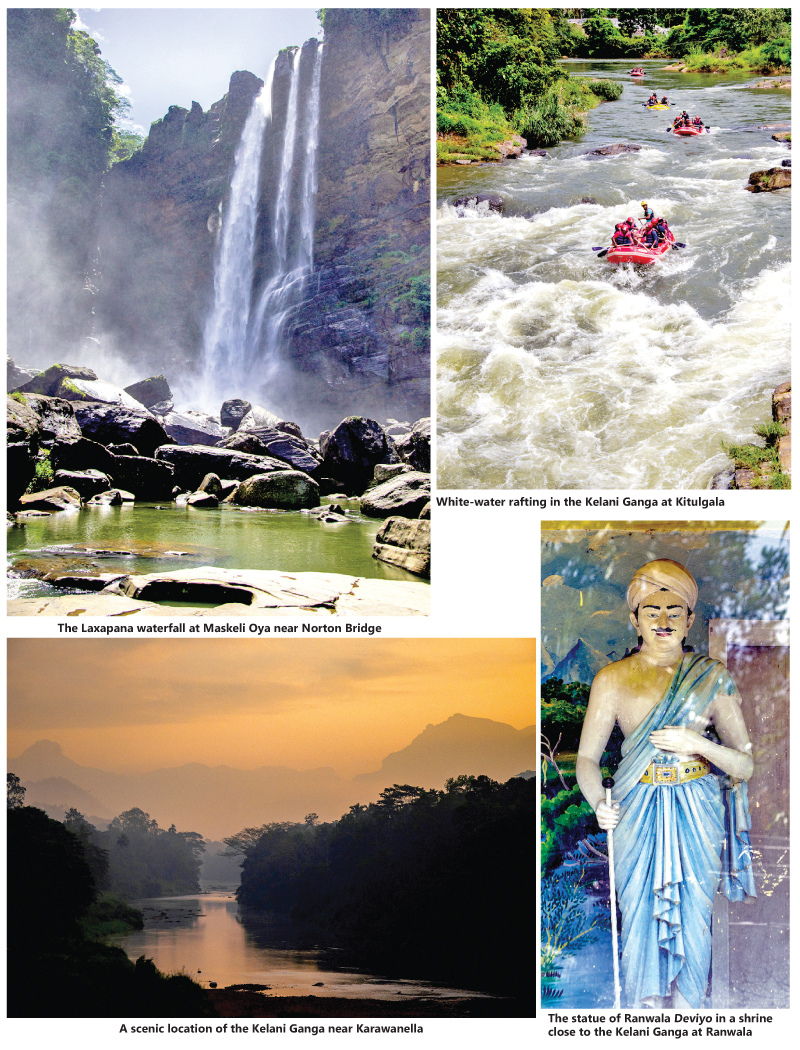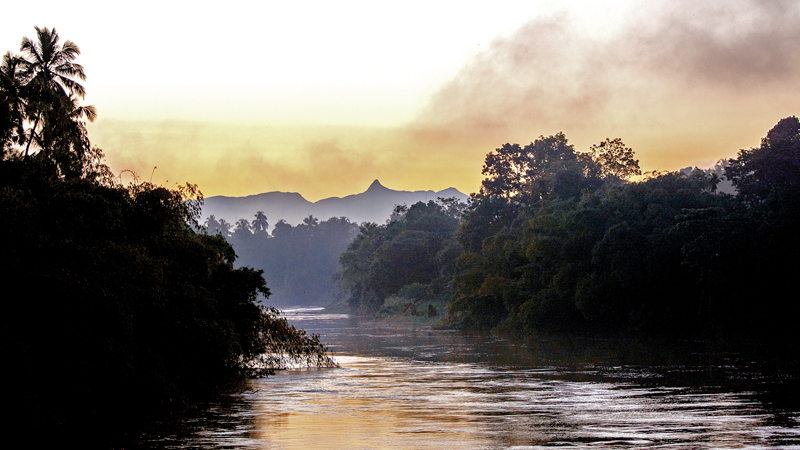 The Kelani Ganga is not merely a river. Its tale has exceeded the temporal realm into holiness. The river is connected closely with the Sinhala Buddhist culture and religion, not least for the people living on the strip of the land known as the Kelani Valley.
The Kelani Ganga is not merely a river. Its tale has exceeded the temporal realm into holiness. The river is connected closely with the Sinhala Buddhist culture and religion, not least for the people living on the strip of the land known as the Kelani Valley.
Its legendary status derives primarily from the fact that the Kelani Ganga is associated with two of the most venerated precincts of Buddhist worship – the Sri Pada (Adam’s Peak) and the Kelani Raja Maha Vihara, sanctified by the touch of the feet of the Buddha during his third visit to Sri Lanka.
He is said to have bathed in the Kelani Ganga before stepping on the ground where the Kelani Raja Maha Vihara now stands. He also set his footprint on the summit of the Sri Pada Mountain where the river springs out, on the invitation of God Sumana Saman.
People consider the Kelani a holy river, and its water is held in high regard by them. Today, the river’s holiness seems to have been desecrated by the water covered with toxic foam caused by industrial waste and sewage from Colombo and other adjoining cities, chemical waste from manufacturing plants and plastic waste. Water purified from this holy river provides three quarters of Colombo’s water needs.
Even today, many people wade in the polluted water and bathe in the river. Women wash their bundle of linen on the banks of the river, while their children swim in the water.
River by the city
Although the 145 km-long Kelani Ganga is not the longest river in the island, it is important as the only river that flows through Colombo to the Indian Ocean.
The Kelani Ganga begins its seaward journey in the cloud forests of the Sri Pada Mountain range and flows through Maskeliya, Laxapana, Kitulgala, Karawanella, Hanwella, Kaduwela, Kelaniya and out to the ocean North of the Port of Colombo. It drains one of the wettest areas of the Central Highlands, carrying a high volume of water towards West into the sea.
At Maskeliya, it begins as a small stream and widens to create a wonderful waterfall at Laxapana – the eighth highest in the country.
In the upper reaches, several large hydroelectric schemes dam the river and provide hydroelectricity to the Ceylon Electricity Board. These schemes help contribute to Sri Lanka’s nearly 50 percent generation of all power through hydroelectricity.
Kitulgala, the wettest, densely forested and beautiful area of the Kelani Ganga, became famous around the world in 1956 when it was used as the shooting location for the Academy award-winning movie, “Bridge on the River Kwai”. The movie set included a real steam engine being blown up over a life-size bridge straddling the Kelani Ganga, East of the Kitulgala sub-town. To this day, the romance of the movie is played up at the Kitulgala Rest House where pictures of the actors and actresses adorn the restaurant wall.
A few remnants of the concrete foundation and iron rods of the former bridge are still visible at the foot of the river bed.
Today, this section of the river in Kitulgala is a prime destination for foreign and local tourists for adventure and eco-tourism such as white-water rafting, hiking, nature trails and bird-watching. Most people in the area earn their livelihood by engaged in vocations aided by tourism.
Added attraction
Karawanella is another point that enhances attraction to the Kelani basin. A bridge has been built across the Kelani Ganga connecting the Hatton- Avissawella highway. The Eastern part of the Kelani Valley up to Kitulgala is visible on bridge.
Coming down to Hanwella, the river gets broad and flows on a flat plain, making way for many bridges and ferries used by the villagers to cross the river. Most villagers who live around the banks of the Kelani Ganga venerate the Ranwala Deviyo, a human who had attained divine status in the minds of the villagers. Legend has it that he is believed to be protecting the villagers around the Kelani Ganga from Ranwala to Kelaniya.
When I travelled along the banks of the Kelani Ganga from Hanwella to Kaduwela in 1998, I caught glimpses of sand mining carried out exclusively by hand. From a moored barge, people dive to the river bed, from where the sand is lifted to the barge in buckets.
When the barge is full, it is taken to the bank, and the sand is unloaded by a separate team. Today, problems arise as saline intrusion is enhanced by the deepening of the river caused by the sand mining.
I have journeyed up the length of this great river many times all the way from the Central highlands to Colombo, capturing the beauty and lives of the people who live on the valley, depending on it to feed and shelter them. Even photographs would portray the river’s diverse story.







